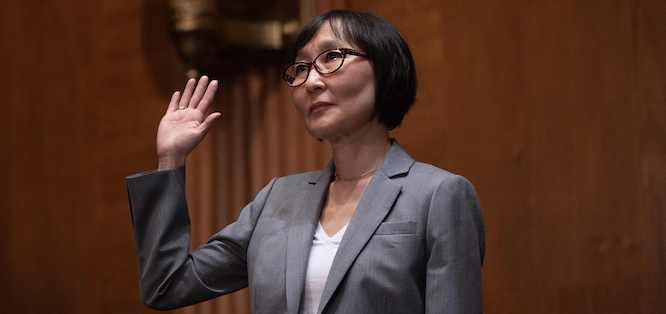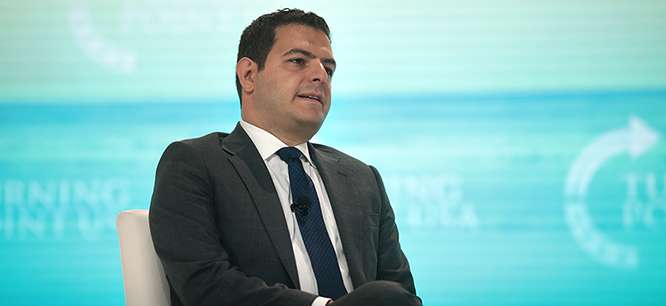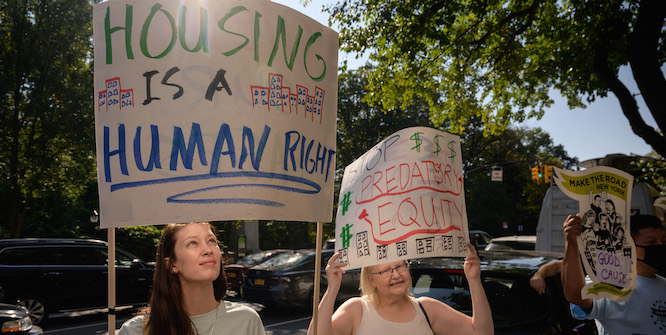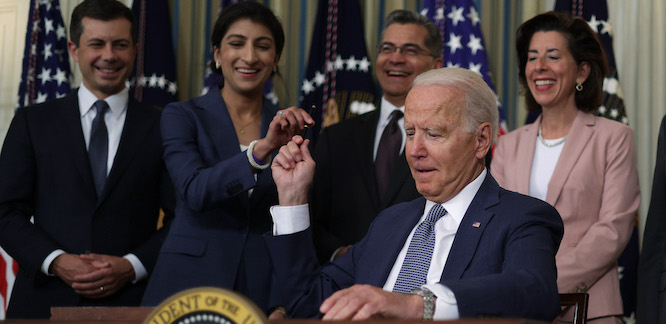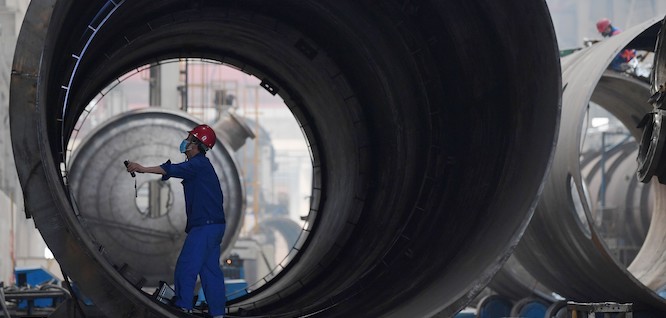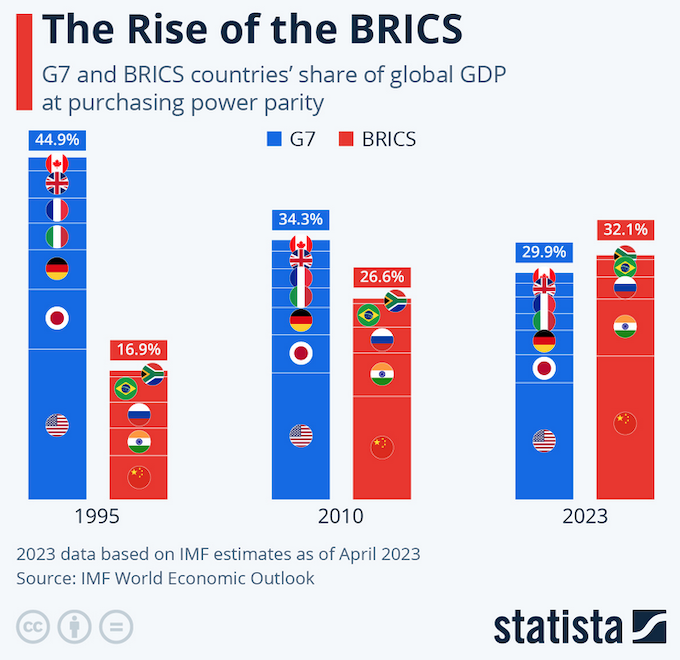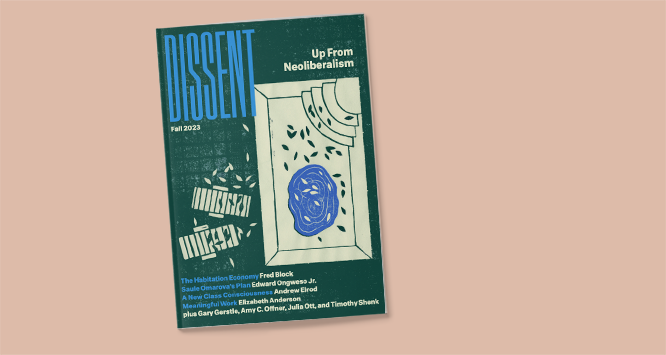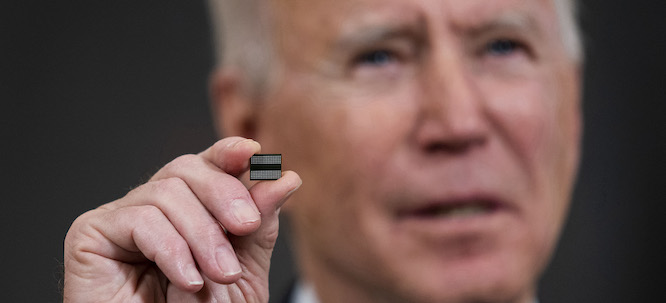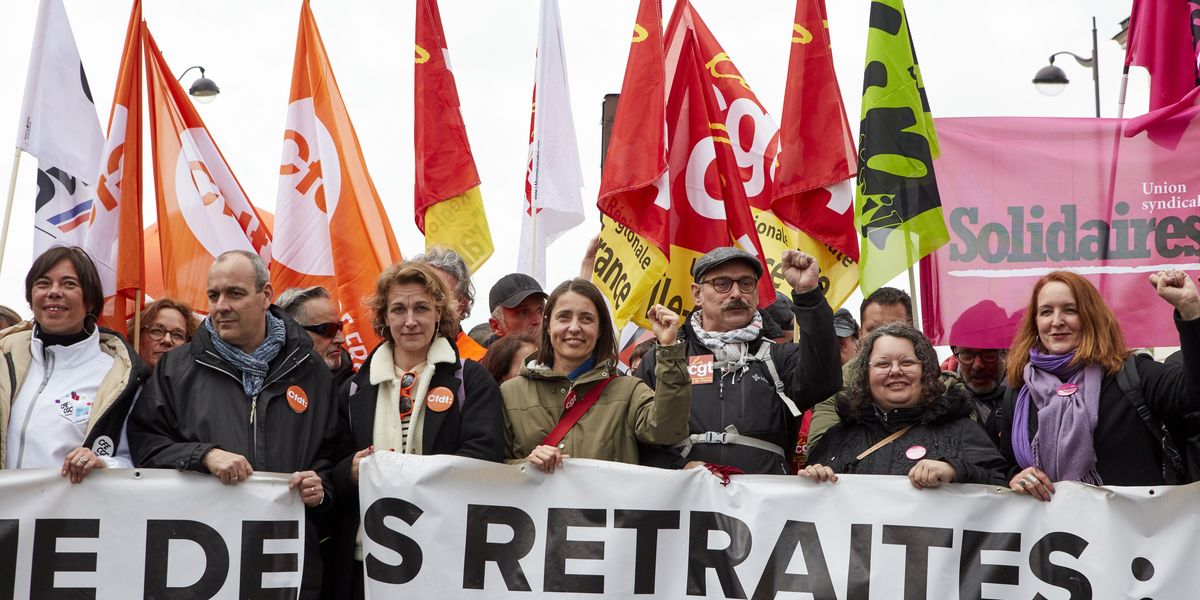
I’m reposting this article about the Democratic Party five years after it was published because after re-reading it, I wouldn’t change a thing. In addition, the Democratic Party has become even more right-wing since it gained power in 2020. At the end of the article I will name the many ways it has gotten still worse.
How to Conceive of the Two-party System
Lesser of two evils
Among liberals and all the different types of socialists, when the subject of the Democratic Party comes up, there are at least two variations. One is the familiar liberal argument that the Democratic Party is the “lesser of two evils”. For them, the Republican Party is the source of most, if not all, problems while the Democratic Party is presented as shortsighted, weak and/or incompetent bumblers. Among some of the more compromising members of the Green Party, the lesser of two evils manifests itself when it implores its voters to “vote in safe states”
There are a number of reasons why I will claim that the Democratic Party is not the lesser of two evils. But for now, I want to point out that the lesser of two evils has at its foundation a political spectrum which is organized linearly with conservatives and fascists on the right. Along the left there are liberals, followed by social democrats, state socialists, and anarchists on the extreme left. All the forces moving from liberals leftward are broadly categorized as “progressive.” What this implies is that there are only quantitative differences between being a liberal and being any kind of socialist. In this scenario, being a liberal is somehow closer to being a socialist than being a liberal is to a being a conservative. However, there is an elephant in the room, and the elephant is capitalism.
What unites all socialists – social democrats, Maoists, Trotskyists, council communists and anarchists – is opposition to capitalism? What divides us from liberals, whether they are inside or outside the Democratic Party, is that liberals are for capitalism. In relation to the economic system, liberals are closer to conservatives than they are to socialists of any kind. So, the “lesser of two evils “argument is based on the expectation that socialists will ignore the capitalist economic system and make believe that capitalism is somehow progressive. It might have been possible to argue this case 60 years ago, but today capitalism makes its profits on war, slave prison labor and fictitious capital. Characterizing this as “progress” is ludicrous.
The parties are interchangeable
Most anarchists and various varieties of Leninists claim there is no difference between the parties. They say that capitalists control both parties and it is fruitless to make any distinctions. I agree they are both capitalist parties, but what most socialists fail to do is point out that, in addition to protecting the interests of capitalists as Republicans do, the Democratic Party: a) presents itself as representing the middle and lower classes; and (b) stands in the way of the formation of a real opposition to the elites.
The second reason I disagree with the idea that the two parties are simply interchangeable is that it fails to make a distinction between the interests of the ruling and upper classes (Republicans) on the one hand, and the upper middle class (mostly Democrats) on the other. There are real class differences between elites that should not be dissolved.
The Democrats are the greater of two evils
The argument I will make in this article is that the Democratic Party is worse than the Republican Party for about 85% of the population. I make this argument as a Council Communist, and my argument in no way implies voting for Republicans, Greens or even voting at all. Before giving you my reasons for why the Democratic Party is worse for most people I want to give you a sense of how I came up with the figure of 85% .
Old money vs new money and the class composition in the United States
Sociologists have some disagreements over how many classes there are in the United States and what occupations cover what social classes. While some might have a bone to pick about my percentages, I am confident that I am at least in the ballpark. The ruling class constitutes the 1% (or less) of the population and the upper class another 5%. What these classes have in common is that they all live off finance capital and do not have to work. This is what has been called “old money”. This old money had its investments in extractive industries like oil, mining and the war industry. This is the stronghold of the Republican Party.
The upper middle classes consist of doctors, lawyers, architects, and senior managers who make a lot of money, but have to work long hours. It also includes scientists, engineers as well as media professionals such as news commentators, magazine and newspaper editors, college administrators and religious authorities Yet there are tensions between the elites and the upper middle class. The upper middle class represents “new money” and makes their profits from scientific innovation, the electronics industry, including computers and the Internet, among other avenues. This class constitutes roughly 10% of the population. The upper middle class is the stronghold of the Democratic Party.
A number of economists from Thomas Piketty to Richard Wolff have argued that for these social classes there has been an “economic recovery” since the crash of 2008. For all other classes there has been decline. The role of the Democratic Party is
- To represent the actual interests of the upper middle class
- To make believe it is a spokesperson for the other 85%
Far be it for me to say that the Republicans and Democrats represent the same thing. There is real class struggle between the interests of the ruling class and the upper class on the one hand and the upper middle class on the other. My point is that for 85% of the population these differences between elites are irrelevant. What the top three classes have in common is a life and death commitment to capitalism – and this commitment is vastly more important than where the sources of their profits come from.
Who are these remaining 85%? Poor people, whether they are employed or not, constitute about 20% of the population. When they are working this includes unskilled work which simply means no previous training is required. Working class people – blue and white collar – represent about 40% of the population. This includes carpenters, welders, electricians, technical workers, secretaries, computer programmers, and X-ray technicians. Middle class people – high school, grammar school teachers, registered nurses, librarians, corporate middle management, and small mom-and-pop storeowners – are about 25% of the population. Most poor people don’t vote and in a way, they are smart because they understand that the Democratic Party can do nothing for them. While many working-class people don’t vote, highly skilled working class people do vote, and many will vote Democrat. Middle classes are also more likely to vote Democrat with the exception of small business owners. In fact, research by labor theorist Kim Moody into the voting patterns of the last election showed that a high percentage of this petty bourgeois voted for Trump.
The Democratic Party has nothing to offer the middle class
When I was growing up in the 1950’s and 1960’s, my father worked as a free-lance commercial artist about 40 hours per week. My mother stayed home and raised my sister and I. One income could cover all of us. My parents sent me to Catholic grammar schools and high schools, which were not very expensive, but they had to save their money to do it. They helped pay for part of my college education after I dropped out and then came back. They helped my partner and I with a down payment on a house in Oakland, CA. Today both parents in a middle-class family need to work and the work-week for middle class workers is at least 10 hours longer. As for savings, if a middle-class family buys a home, it is much more difficult to save for their children’s education.
In 1970 I was living in Denver, Colorado and had my own studio apartment for $70/month. I worked 20 hours a week at the library as a page and could afford to go to community college part-time. Twenty years later I tried to communicate this to my stepdaughter who was 20 years old and then compared it to her experience. She was working full-time as a waitress, had to live with two other people and could only afford to take a couple of classes without going into debt. Reluctantly and seemingly defeated she had to return home to live if she were to ever graduate from a community college. The Democrats did nothing to stem the tide of the decline of the middle class. Working class and middle class people may continue to vote for Democrats, but that doesn’t mean Democrats are delivering the goods. It just means these classes don’t want to face that:
- a) They have no representation;
- b) There is no alternative party and they do not live in a democracy.
Now on to why I believe the Democratic Party is worse that the Republican party for this 85% of the population.
The Democratic Party has nothing to do with being liberal
Most people who support the Democratic Party don’t really consider the party as it actually is, but how they imagine it should be according either to political science classes they’ve picked up in high school or college or from what they have picked up unconsciously through conversations. They have also gotten this from Democratic Party members themselves who talk about liberal values while in practice acting like conservatives. These voters think the Democratic Party is liberal. What do I mean by liberal? The term liberal has a long political history which I have traced elsewhere (Counterpunch, Left Liberals Have No Party) but let’s limit the term to what I call “New Deal Liberals”.
These New Deal liberals think that the state should provide essential services like pensions, food stamps, natural disaster relief as well as road and bridge construction. They also think the state should intervene to minimize some of the worst aspects of capitalism such as child wage work or sex slavery. These liberals think that Democrats should support the development of unions to protect the working class. This class deserves an adequate wage and decent working conditions. They also think – as it is in the American dream – that in order to justify their existence, capitalists should make profit from the production of real goods and services. These liberals think that the Democratic Party should support the development of science and research to create an easier life so that the standard of living for the American population should go up from generation to generation. These are the values of New Deal liberals. If the Democratic Party acted as if it supported these things, I could understand why liberals would say voting for the Democratic Party is the lesser of two evils. The problem is that these New Deal liberals are trapped in a 50-year time warp when the last real liberal Democratic president was Lyndon Johnson. The Democratic Party hasn’t been liberal in 50 years. This is one reason why the program of New Deal liberal Bernie Sanders had been so popular.
It does not take a Marxist to argue that the United States has been in economic decline since the mid 1970’s. It won’t do to blame the Republicans alone for this 50-year degeneration. The Democratic Party has had presidents between 1976 and 1980, in addition to eight years of Clinton, as well as eight years of Obama. They have had twenty years’ worth of chances to put into practice liberal values and they have failed miserably. Under the Democratic Party:
- The standard of living is considerably below the standard of living 50 years ago.
- The minimum wage bought more in 1967 than it does today.
- The standard of living for all racial minorities has declined since the 1970’s.
- Unions, which protected the working class, have dwindled to barely 10%.
- With the possible exception of Dennis Kucinich, no Democrat is prepared to commit to building infrastructure as a foundation for a modern civilization.
- The proportion of wealth claimed by finance capital has dwarfed investment in industrial capital compared to fifty years ago.
- The Democrats have signed off on all imperialist wars for the last 50 years.
- Science has lost respectably in the United States as it fights a battle against fundamentalism. Do Democrats come out unapologetically for science and challenge the fundamentalists and the New Agers? There are more people in the US who believe in astrology than they did in the Middle Ages. Does the Democratic Party, in the name of its claimed roots in the Enlightenment, rescue the public from these follies? Hardly.
Please tell me in what sense is this party liberal?
The Democratic Party is not an oppositional party: the Republicans play hardball; the Democrats play badminton
It is right about this time that a liberal defending the Democratic Party would chime in and say something about the Supreme Court. The line is “If we don’t get so and so elected, then the evil right-wing judge will get appointed and Roe vs Wade will be threatened.” This line has been trotted out for the last 45 years. What it conveniently ignores is that the Democratic Party has been in power for at least 40% of the time, whether in the executive or any other branch. It has had forty years to load the Supreme Court with rabid liberals so as to bury the right-to-lifers when they had the chance. An oppositional party would have done this. The Democratic Party has not.
Trump has been on a tear destroying what was left of US international diplomatic relations put into place by Kissinger and Brzezinski. His “policies” are consistently right wing “interventions”, whether they succeed or not. At the same time, domestically Trump has been consistently right wing on every issue from public schools, to immigrants to social programs. What he has done has destabilized international and domestic relations. Conservatives have been doing this kind of thing for 50 years, but with more diplomacy. If the Democratic Party were really an oppositional party, I would expect to find liberal interventions that are roughly the reverse of what Trump and the conservatives have done. There have been no such interventions.
Examples of what an oppositional party would look like
Under an oppositional Democratic regime we would have found a normalization of trade relations with Cuba. There would be scientists and engineers sent to Haiti to build and repair roads and bridges destroyed by natural disasters. There would be normalization of relations with Venezuela and bonds built with the social democratic parties of the Latin American left. Domestically the minimum wage would be restored to at least the standard of 50 years ago. After all, statistics show “productivity” has gone up in the late 50 years. Why wouldn’t the standard of living improve? Social Security and pensions would be regularly upgraded to keep up with the cost of inflation. Bridge and road repair would have been undertaken and low-cost housing would be built. A real liberal president might be so bold as to deploy US soldiers to build them since most of them would no longer be employed overseas. They might also have put forward bills implementing a mass transit system, one that is as good as those of Europe or Japan. Has the Democratic Party done any of these things?
This is “opposition”?
Internationally the Democratic Party’s policies have been indistinguishable from the Republicans. Obama did try to normalize relations with Cuba but that was in the service of the potential for foreign investment, not out of any respect for the social project of building the socialism Cuba was engaged in. The US Democratic regimes have done nothing for Haiti. Its attitude towards the Latin American “pink tide” has been hostile while supporting neoliberal restoration whenever and wherever possible.
Domestic Democratic regimes have done nothing to stem the tide of longer work hours and marginalization of workers as well as the temporary and part-time nature of work. Social Security and pensions have not kept up with the cost of inflation. The Democratic Party has had 20 years to repair the bridges, the roads and the sewer systems and what has it done? The Democrats had 20 years to build low-cost housing and get most, if not all, the homeless off the streets. What have Democrats done? Like the Republicans, the Democrats have professed to have no money for infrastructure, low cost housing or improving mass transit. Like the Republicans they have gone along in blocking Universal Health Care that virtually every other industrialized country possesses. But just like the Republicans they suddenly have plenty of money when it comes to funding seven wars and building the prison industrial complex. Time and again Democratic politicians have ratified increasing the military budget despite the fact that it has no state enemies like the Soviet Union.
In 2008 capitalism had another one of its crisis moments. Marxists and non-Marxist economists agree that the banks were the problem. The Democrats, with that classy “first African American president” did not implement a single Keynesian intervention to reign in the banks. No banker has even gone to jail. What a real Democratic opposition would have done is to tell the banks something like, “look, the public has bailed you out this time, but in return for this collective generosity, we require that you make your profits from undertaking all the infrastructural work that needs to be done, like building a 21st century mass transit system and investing some of your profits in low cost housing.” This is what an oppositional party would do. Notice none of this has anything to do with socialism. It’s straight New Deal liberalism.
In sum, the last 45 years have you ever seen a consistent left liberal intervention by Democrats that would be the equivalent of what Trump is doing now or any conservative regime has done in the last 50 years in any of these areas? Has Carter, Clinton I or Obama done anything equivalent in their 20 years of formal power that Republicans have done in their 30 years? No, because if they ever dreamed of doing such a thing the Republicans would have them driven from office as communists. When was the last time a Democratic candidate drove a Republican from office by calling them a fascist? The truth of the matter is that the Republicans play hardball while the Democrats play badminton.
The second reason the Democratic Party is not an oppositional party is because “opposition” is a relative term. The lesser of two evils scenario works with the assumption that parties are partisan: all Republicans vote in block and all Democrats vote in block. This, however, is more the exception than the rule. Most times some Republicans support Democratic policies and most times some Democrats support Republican measures. Many Republican policies would not have been passed had the Democrats really been an oppositional party. In 2004, when Ralph Nader ran for president, he was raked over the coals for “spoiling” the elections. Yet as later research proves, more people who were registered Democrat voted for Republicans than the total number of people who voted for the Green Party.
The Democratic Party is a party of the elites
Those politicians and media critics who inhabit the nether worlds between left liberal and social democracy such as Robert Reich, Bernie Sanders, Cornell West are tenacious in their search for the “soul” of the Democratic Party. They insist on dividing Democrats into conservative and liberals. The latest version is to call right-wing Democrats “corporate” Democrats as compared to some other kind of Democrat labelled “progressive”. The implication is that it is possible not to be bought hook line and sinker by corporations if you are in the Democratic Party. I am skeptical that any person can run as a Democrat candidate win an election and not make some compromises with corporations even at a local level, I am cynical this can be done at a state or national level. Corporations are ruling class organizations and they own both parties. There is a reason why Martin Luther King, Malcolm X never joined the Democratic Party.
If the last Democratic primaries in which Clinton II was handed the nomination over Bernie Sanders was not enough to make you leave the party, the World Socialist Website published two major articles on how the CIA is running its own candidates as Democrats this year. When a world terrorist organization runs candidates under a liberal banner, isn’t that enough to convince you that the Democratic Party is a party of the elites?
Earlier I stated that the upper middle class represents the Democratic Party and the upper class and the ruling class represent the Republican Party. While each may have interclass differences it is essential for all three social classes that their struggle be seen by the 85% as something this 85% has a stake in. It is important for the ruling class and the upper class that there is a party that appears to represent the unwashed masses (the Democrats). The ruling class and the upper class need the Democratic Party even if they have differences with the upper middle class, whom the Democrats represent. They need the Democratic Party to help create the illusion that voting is an expression of democracy. But the Democratic Party has as much to do with democracy as the Republican Party has to do with republicanism.
The Democratic Party’s presence is an obstacle to building a real opposition to elites
By far the greatest reason the Democratic Party is worse than the Republican Party is the way in which the presence of the Democratic Party drains energy from developing a real opposition to the elites and the upper middle class.
The Democratic Party attacks the Green Party far more than it attacks Republicans
While the Democratic Party plays badminton with Republicans, it plays hardball with third parties, specifically the Green Party. It does everything it can to keep the Greens off the stage during the debates and makes things difficult when the Greens try to get on the ballot. After the last election, Jill Stein was accused of conspiring with the Russians to undermine the Democrats.
If the Democratic Party was a real liberal party, if it was a real opposition party, if it was a party of the “working people” rather than the elites, it would welcome the Green Party into the debates. With magnanimously liberal self-confidence it would say “the more the merrier. May all parties of the left debate.” It would welcome the Greens or any other left party to register in all 50 states and simply prove its program superior.
The wasted time, energy and loss of collective creativity of non-elites
About 10% of the 40% of working class people are in unions. Think of how much in the way of union dues, energy and time was lost over the last 50 years trying to elect Democratic candidates who did little or nothing for those same unions. All that money, energy and time could have been spent in either deepening the militancy of existing unions or organizing the other 30% of workers into unions.
Think of all untapped creative political activity of working class people who are not in unions that was wasted in being enthusiastic and fanatical about sports teams because they see no hope or interest in being part of a political community. Instead of being on talk show discussion groups on Monday morning talking about what the Broncos should have done or could have done on Sunday, think of the power they could have if instead they spent their time strategizing about how to coordinate their strike efforts.
Think of all the immigrants and refugees in this country working at skilled and semi-skilled jobs that have wasted what little time they had standing in line trying to get Democratic Party politicians elected. That time could have been spent on more “May Days Without An Immigrant” as happened thirteen years ago
Think of all the middle class African Americans whose standards of living has declined over the last 45 years who wasted their vote on Democrats and put their faith in the Black Caucus. Think of the wasted time, effort and energy of all middle class people who often actively campaign and contribute money to the Democratic Party that could have been spent on either building a real liberal party or better yet, a mass socialist party.
For many years, the false promise that the Democratic Party just might be a party of the working people has stood in the way of the largest socialist organization in the United States from building a mass working class party. Social Democrats in the Democratic Socialists of America (DSA) who should have known better continue to blur the line between a real socialist like Eugene Debs and left liberals like Bernie Sanders. With 33,000 members there are still factions of DSA that will not break with the Democrats.
Are there real differences between the neoliberal Democrats and the neoconservative Republicans? Are there differences between Soros and the Koch brothers? Yes, but these differences are not, as Alexander Cockburn and Jeffrey St. Claire have said, “a dimes worth of difference”, especially compared to what the presence of the Democratic party has done for 50 years to 85% of the population. Their fake opposition has stood in the way of building a mass left political party.
The Democratic Party is a parasite on social movements
Can you remember a time when the Democratic Party had an innovative program of their own that was clearly separate from the Republicans yet distinct from any left wing social movements?
I can’t. What I have seen is a Democratic party that does nothing but sniff out the flesh and blood of social movements and vampirize them. I have no use for identity politics, but I can remember a time when the Democratic Party wanted nothing to do with it. Now it runs candidates based on identity politics. Black Lives Matter is now part of the Ford Foundation, a Democratic Party think tank. The Occupy Movement term “occupy” was taken as a name for a Facebook page sympathetic to the Democrats, Occupy Democrats, as if the Democratic Party could be occupied. The Democratic Party, which did nothing for feminism while it was attacked and marginalized by the right wing since the 1980’s, has suddenly “discovered” feminism in the Pink Pussy cats. This is an upper middle class party that sings “We Shall Overcome” fifty years too late.
What should be done?
Rather than focusing on the evil Republican Party, which makes the Democrats seem merely wishy- washy or inept, the policies of the Democratic Party should be attacked relentlessly while paying little attention to Republicans. In the election years, the Green Party should abandon its strategy of soliciting votes in “safe states”. Instead, the Greens should challenge those who claim to be “left-wing” Democrats to get out of the party as a condition for being voted for. In my opinion, there needs to be an all-out war on the Democratic Party as a necessary step to building a mass party. The goal of such a party should not be to win elections, but to use public opportunities as a platform for deepening, spreading and coordinating the commonalities of the interests of the poor, working class and middle class people.
How the Democratic Party Has Gotten Worse in the Last Five Years
- It has surrendered its foreign policy maneuvers to neocons Victoria Nuland and Robert Kagan.
- It has aided, trained and supplied military supplies of fascist forces in Ukraine
- It has blown billions of dollars on the war in Ukraine (I thought the Republicans were the “War party”).
- It cannot compete with China or Russia in building infrastructure, providing raw material and goods so its solution is to make war on them.
- It failed to replace a head of state who is incompetent, incoherent and is incapable of any rhetorical debate while lacking in any power and backbone.
- Its profits are made on either destroying the productive forces (wars) or the creation of fictitious capital.
- It has exerted no control over the financial, insurance or real-estate sector while the manufacturing sector of the economy declines (this is Build Back Better?).
- The Fed solution to debt is to print more money not backed by gold.
- The Democrats have done nothing to stabilize the manic-depressive stock market.
- It has failed miserably to reform its domestic terrorist organizations, euphemistically referred to as “police departments”, where killing civilians has become normalized.
- It has failed miserably to attack the NRA and intervene effectively in regular mass shootings all over the country.
- It has done nothing to raise the minimum wage. People can work-full time and be homeless because their rent is higher than their income.
- It is does nothing to end the slave labor in prisons or reduce the numbers of people in prison.
- It has done nothing about the housing crisis where the number of vacant houses in this country are five times that of the homeless population.
- High school and grammar school education is in shambles. Yankee students cannot compete internationally.
- Primary and secondary educators are leaving the field. The Yankee state is hiring teachers at that level with no teaching experience or formal training.
- After all its promises it has failed to do anything to relieve student debt.
- It has failed to protect the Roe vs Wade decision making abortions legal.
- The party has a paranoid, conspiratorial explanations for its failures, beginning with the loss of Clinton to Trump in 2016. It used to be the Democratic Party made fun of conspiratorial people like Alex Jones. Today its conspiracies are its stock and trade explanation for its failure.
On the other hand the Democratic Party has embraced New Deal liberalism in the following ways….ummm…it’s okay, I’ll wait.
• First published in Socialist Planning Beyond Capitalism

This content originally appeared on Dissident Voice and was authored by Bruce Lerro.
